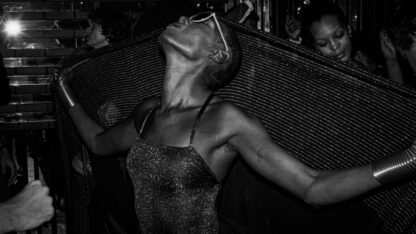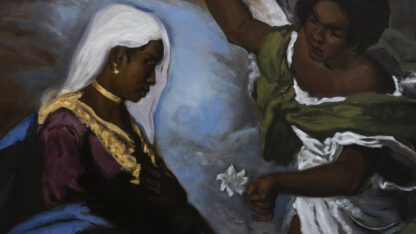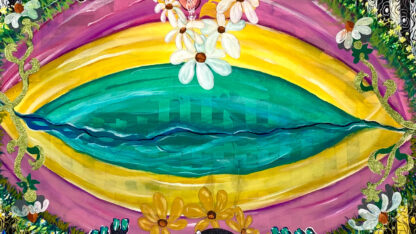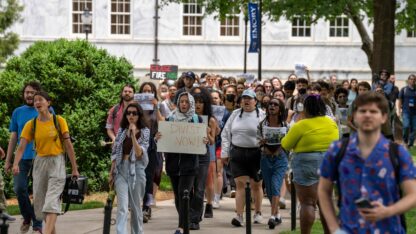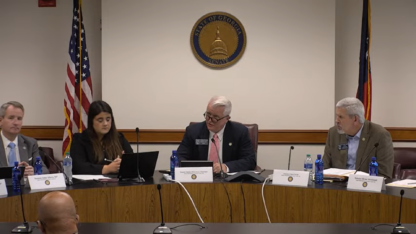'Leaving Mississippi' exhibit speaks of unsung heroes, crossroads, and Black life in the deep South

Acclaimed artist Najee Dorsey uses mixed media collage and digital media collage images that tell compelling stories of Black life in the deep South. He is CEO and founder of the arts organization Black Art in America, or BAIA.
Mr. Dorsey’s works have been featured in exhibitions at museums throughout the country, and his latest show, “Leaving Mississippi: Reflections on Heroes and Folklore” is on view through Feb. 11 at the Black Art in America Gallery. Najee Dorsey joined “City Lights” host Lois Reitzes via Zoom to talk about the new exhibition.
Interview highlights:
Centering lesser-recognized figures rather than famous faces:
“I like to do the unsung, because I think a lot of people don’t necessarily give the due to just the everyday person that’s actually out doing the work. For every leader, there’s tens or hundreds of people who the leader leans on to actually implement anything, and so those stories are important too,” explained Dorsey. “The perfect example for me would be the story of Gullah Jack… Denmark Vesey was the spearhead of what was going to be the 1822 Slave Revolt in Charleston, South Carolina. But Gullah Jack was his right hand; he was his confidant.”
He continued, “The same thing with when I do a story of Claudette Colvin. We all are grateful and familiar with the work that Rosa Parks put into the Civil Rights struggle and movement, but she wasn’t the first. And so to be able to tell a story about a young girl who was 15 years old and refused to give up her seat… that was Claudette Colvin. And so I did this piece titled ‘Before Rosa,’ and it’s to tell Claudette’s story or stories like Henrietta Lacks, and the HeLa Cell, so there’s a number of different stories, and I think that’s my role, and those are the things that really kind of interest me.”
Explaining the show’s title, “Leaving Mississippi:”
“A muse in my body of work, basically since I started my professional career, has always been Robert Johnson and the story of the crossroads – the famous blues musician from the ’20s and ’30s, and folklore has it he sold his to be the baddest guitar player ever. But he was from Mississippi, and the crossroads that’s always referenced…an hour and a half from where I grew up at in Mississippi, Highway 61 and 49 meet. And I think it is also a play on the challenges that we have had as people of color in this country, and for me, Mississippi is a great metaphor for those challenges.”
On art as a reflection of an artist’s time and place:
“Art has to be more than just a commercial endeavor. Right now, I mean, it’s extremely hot. Museums are collecting it, you’ve got flippers that are buying, and you’ve got so many people coming into the space looking to acquire your work, sometimes we can lose that substantive nature, that being conscious of what’s going on around us, and using our art and our voice to bring attention to certain social injustices,” said Dorsey.
He went on, “That’s not all I do, but it’s part of the balance that I have for myself, in saying that, ‘Hey, yeah, I do these pretty pictures of interior scenes, or families, or Black love and things of that nature,’ but I’m also conscious of the themes of the environment that I live in, and the country that I live in. From time to time, I’ll create work that speaks to some of these injustices, and I think a great example of that in the contemporary sense is if you look at the work that I did on the Poor People’s Campaign, where I centered children as the reference point for having a broader discussion about how we live in plain sight of environmental racism and injustice.”
“Leaving Mississippi: Reflections on Heroes and Folklore” is on view at the Black Art in America Gallery through Feb. 11. More information is available at https://www.blackartinamerica.com/pages/events
